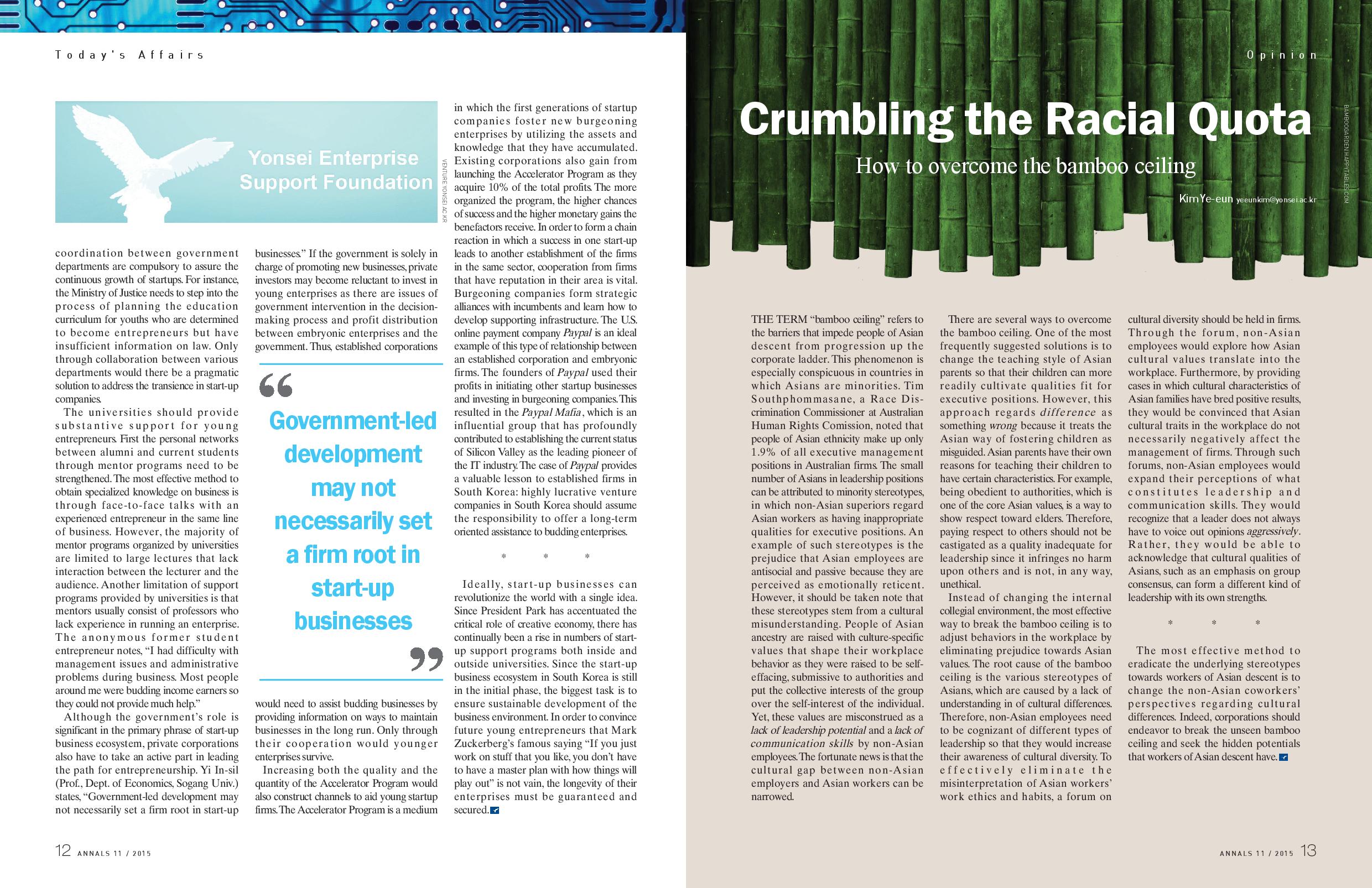How to overcome the bamboo ceiling


THE TERM “bamboo ceiling” refers to the barriers that impede people of Asian descent from progression up the corporate ladder. This phenomenon is especially conspicuous in countries in which Asians are minorities. Tim Southphommasane, a Race Discrimination Commissioner at Australian Human Rights Comission, noted that people of Asian ethnicity make up only 1.9% of all executive management positions in Australian firms. The small number of Asians in leadership positions can be attributed to minority stereotypes, in which non-Asian superiors regard Asian workers as having inappropriate qualities for executive positions. An example of such stereotypes is the prejudice that Asian employees are antisocial and passive because they are perceived as emotionally reticent. However, it should be taken note that these stereotypes stem from a cultural misunderstanding. People of Asian ancestry are raised with culture-specific values that shape their workplace behavior as they were raised to be self-effacing, submissive to authorities and put the collective interests of the group over the self-interest of the individual. Yet, these values are misconstrued as a lack of leadership potential and a lack of communication skills by non-Asian employees. The fortunate news is that the cultural gap between non-Asian employers and Asian workers can be narrowed.
There are several ways to overcome the bamboo ceiling. One of the most frequently suggested solutions is to change the teaching style of Asian parents so that their children can more readily cultivate qualities fit for executive positions. However, this approach regards difference as something wrong because it treats the Asian way of fostering children as misguided. Asian parents have their own reasons for teaching their children to have certain characteristics. For example, being obedient to authorities, which is one of the core Asian values, is a way to show respect toward elders. Therefore, paying respect to others should not be castigated as a quality inadequate for leadership since it infringes no harm upon others and is not, in any way, unethical.
Instead of changing the internal collegial environment, the most effective way to break the bamboo ceiling is to adjust behaviors in the workplace by eliminating prejudice towards Asian values. The root cause of the bamboo ceiling is the various stereotypes of Asians, which are caused by a lack of understanding in of cultural differences. Therefore, non-Asian employees need to be cognizant of different types of leadership so that they would increase their awareness of cultural diversity. To effectively eliminate the misinterpretation of Asian workers’ work ethics and habits, a forum on cultural diversity should be held in firms. Through the forum, non-Asian employees would explore how Asian cultural values translate into the workplace. Furthermore, by providing cases in which cultural characteristics of Asian families have bred positive results, they would be convinced that Asian cultural traits in the workplace do not necessarily negatively affect the management of firms. Through such forums, non-Asian employees would expand their perceptions of what constitutes leadership and communication skills. They would recognize that a leader does not always have to voice out opinions aggressively. Rather, they would be able to acknowledge that cultural qualities of Asians, such as an emphasis on group consensus, can form a different kind of leadership with its own strengths.
* * *
The most effective method to eradicate the underlying stereotypes towards workers of Asian descent is to change the non-Asian coworkers’ perspectives regarding cultural differences. Indeed, corporations should endeavor to break the unseen bamboo ceiling and seek the hidden potentials that workers of Asian descent have.

